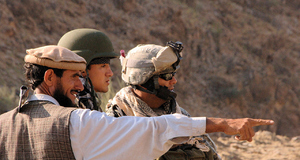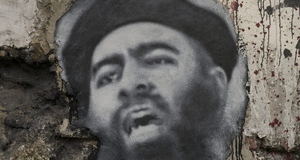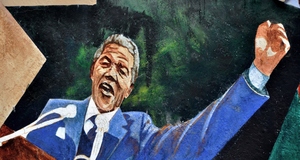Social Movement Theory and Terrorism: Explaining the Development of Al-QaedaFraming and Al-QaedaAs described in section 2, frames serve two purposes. The first is to provide lenses through which to analyze future events and the second is to justify one's behavior. Considering al-Qaeda four claims constitute the political goals at the core of all framing:
Their prevalence is entitled a 'casus belli' justifying acts of violence. However, violence was never a means in itself as suggested by Hoffman89, but rather an acceptable strategic component. Anti-Western narratives can be traced back to the Muslim brotherhood's Sayyid al-Qutb, one of the most important figures of political Islam90 who has demanded the - if necessary violent - establishment of an Islamic community based on sharia and rejecting the influence of the West.91 Since the US government is democratically elected, al-Qaeda leaders stress the responsibility and culpability of the American people.92 This framing claims justification for the killing of American civilians. While some may question the credibility of Osama bin Laden's political discourse, it is successful in creating a frame of 'us against them' and standing up for the goals has increased support.93 The CIA acknowledges that especially the situations in Chechnya and Palestine increase the numbers of Sunni extremists94 and once successful anti-American frames are adopted by local groups in e.g. Kenya.95As previously described, frames are created along political, historical, socio-psychological and religious lines. Bayat96 describes major diversities within Islamic movements and therefore downplayed the explanatory value of social movement theory. To the contrary, the religious frame is used specifically to encompass all Muslims and create a common identity uniting "the children of an Islamic Nation"97. Lawrence assesses in detail the use of passages from The Qur'an for religious framing and justification and stresses the need for a counter-narrative based on "alliances of culture and education"98. In addition to the described external purpose, framing also serves internal goals e.g. intentionally exaggerating a threat to make oneself indispensable. This internal framing shaped Osama bin Laden's image in the Islamic world of a 'meta-statesman'99. The evolution from a hierarchical to a regionally decentralized structure led to internal competition within al-Qaeda. The immediate central directive lost importance and al-Qaeda now aims at providing "politico-religious and military-strategic commentary, not operational direction"100. Thereby, the central control over the ideology becomes crucial to ensure that groups' actions align with the leadership's goals. Central standards were endangered when e.g. al-Qaeda in Mesopotamia performed beheadings101, when al-Qaeda-related groups in Northern Africa turned to their old tactics of conducting kidnappings as a means of funding or when Catholics were held hostage in an Iraqi church102. This gave rise to internal criticism from Osama bin Laden103 and others104 and debates105 between al-Qaeda and its franchises since attacks were automatically associated with the whole of al-Qaeda. Evidence even suggests a drive for more central control by Osama bin Laden in mid-2010.106 The creation of an official al-Qaeda media branch107 shows that al-Qaeda aims to centrally guide overall media strategy108 as a reaction to increasingly independent media output by local organizations.109 This could be called a dilemma of movement organization: Al-Qaeda has been an inclusive organization which by the definition of Zald and Ash-Garner "requires minimum levels of initial commitment – a pledge of support without specific duties […]"110.Nevertheless, the loose structure of al-Qaeda in the years after 2001 is more resembling of an exclusive organization, which sees groups as declaring allegiance to a central figure, but who "lack common, central leadership, organization and clear-cut procedures for deciding upon a common course of action"111 In this context a strict code of conduct is necessary to ensure a homogeneous behavior of different groups within the network. As this section has argued this code of conduct is not centrally imposed112, but follows instead from the common ideology and the use of framing. As a result, despite the different principles across al-Qaeda, common political aims seem to prevail in e.g. sparing non-NATO countries such as Sweden. A detailed analysis of an insider's diary concludes by saying: "[recent-day] al-Qai'ida' … is more of an idea (fikr) than an organization"113. Sageman114 and Bakker115 in their studies analyze increasingly autonomous individuals and the way that different frames are used to reach the poor as well as Europe's well-educated lone wolves. Bakker states that conclusions can be drawn regarding the descent and gender of al-Qaeda's mujahedeen, but further generalizations cannot. As Sageman underlines social links of family or friends may be more important than ideology in self-recruitment and radicalization among European individuals. Oberschall recognizes such cohesive functions of relationships even between actors of different groups influencing the development of conflict.116 Given the micro-level dimensions of these analyses, we reach the explanatory limits of social movement theory. The Shortcomings of Social Movement TheoryThis section suggested that social movement theory provides valuable arguments for understanding al-Qaeda as a social movement. However, there are major shortcomings in social movement theory which have been discussed in the literature since the late 1970s and especially in the most recent years. These shortcomings apply especially to recent day decentralized al-Qaeda relying on many actors. This paper's introduction has set the level of analysis at the structural level and in addition attempted to take into considerations individual actors. This proved impossible within the boundaries of social movement theory, since individuals and their interactions are largely ignored and considered part of a collective behavior. The prevailing questions are how to explain conflict and violence within social movements and al-Qaeda and how to include individual actors in the bigger picture. The remainder of this essay briefly addresses these questions and offers starting points for further research. Authors like Sageman have blamed false policy advice on the dilemma of macro-level analysis and of treating a conflict group as a single actor. However, he also raises controversial and largely normative solutions.117 To overcome this lack, in-depth research on individual life stories such as those of the 9/11 plotters may be a good starting point.118 As explained by Lianos119 in the context of police action, crowds may unite when treated homogeneously and indiscriminate repression may lead to large-scale (oppositional) violence. Within this process in-groups and out-groups seem to be automatically constructed forming a sense of identity without the explicit need for a movement entrepreneur or means of framing. While describing themes similar to social movement theory at the macro-level120, Oberschall stresses the importance of interactions at the micro-level in an environment of uncertainty. This influences, he argues, the development of a conflict and has to be taken into consideration. Different from other Islamic social or political movements such as Hamas or Hezbollah which maintain a network of educative and health-related institutions121, al-Qaeda does not promote grass-root development. This highlights another limit of social movement theory which does not explain violent conflict. Some authors argue that violence is solely used to attract the world's attention in promoting a cause and that this is necessary as a tactical component for terrorist organizations requiring an audience. It is necessary regarding the terms of conflict and violence to avoid the mistake of confusing the two. Whereas violence, harming human life and property, is undesirable, conflict is important in any aspect of human interaction and sociality. The outcome of conflict is what advances societies and has been acknowledged by many authors including Jefferson122 as necessary in supplying opportunities for change. Given the multifaceted nature of conflict it is difficult to accept broad generalizations such as: "conflict is the main efficient way of … pursuing change and violence the fastest way of realizing conflict"123 which oversimplifies the outcome of violent uprisings. It is important instead to consider specific contexts. As Tilly observes within the French Revolution subgroups may resort to violence whereas others protest peacefully.124 Lianos stresses the influence of a system's closure and its individual's uncertainty in causing violent conflict. In general, rising socio-economic and organizational systemic closure will reduce each individual's options and increase demands for certainty. Especially in traditional settings this feeling of closure will lead to a collective demand for certainty which can erupt in violence against the system and may endure until the demand for certainty is satisfied or the closure of the system is reversed.125 In modern societies the demand for certainty may remain a personal issue without collective projection.126 He convincingly argues that this is owed to the individualistic identities in post-modern societies. Due to the fragmented preferences of individuals towards different topics, a joint claim is less likely to form than in traditional collective societies.127 Since only rarely violence arises, Lianos considers a threshold of closure of a system necessary to trigger violence on the basis of a strong collective.128 These aspects of closure and additionally Gurr's idea of "relative deprivation" introduced in 'Why men rebel'129 could provide insight into the rise of so called 'lone wolves' in Europe's system whose expected and experienced acknowledgement by the community gap. Lone wolves may thereby be both highly-educated individuals as well as educational under-achievers who see "conversion as an escape."130 Both cases may provide a basis for frustration. Gurr argues that individual emotions and especially frustration due to e.g. poverty or inequality should be seen as a reason for violence and collective violence. Analyzing the recent uprisings in North Africa and Syria and its influence on al-Qaeda could provide good test cases. Furthermore, the research of Opp131 and Eschle132 which emphasizes economic and cultural considerations by introducing aspects of game theory or respectively 'feminism' to explain micro-level behavior call for the application to social movements. These examples depict only a portion of the complexity which analysis at the micro-level imply. Nevertheless, it will be necessary to create a more complete understanding of social movements in general and al-Qaeda and al-Qaeda specifically. Research at the micro-level may provide new insights as a basis for more comprehensive policy advice in the 'War on Terror' and the 'Battle for Hearts and Minds'.Continued on Next Page » Suggested Reading from Inquiries Journal
Inquiries Journal provides undergraduate and graduate students around the world a platform for the wide dissemination of academic work over a range of core disciplines. Representing the work of students from hundreds of institutions around the globe, Inquiries Journal's large database of academic articles is completely free. Learn more | Blog | Submit Latest in Political Science |


















